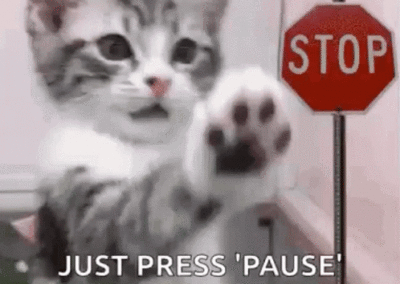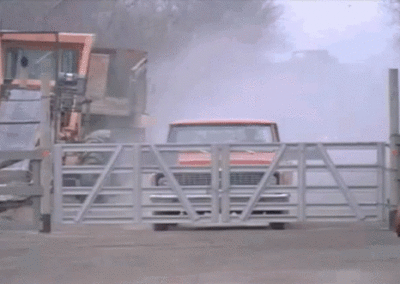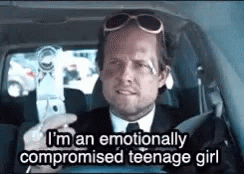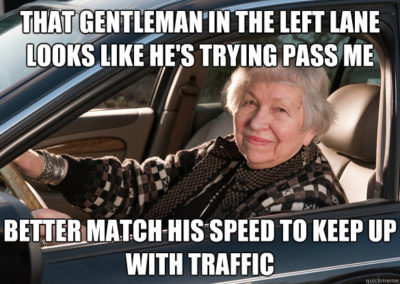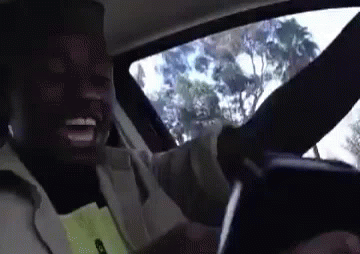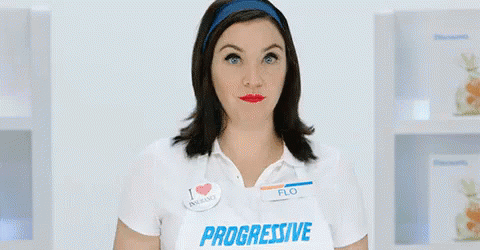KNOWING WHEN NOT TO DRIVE
Attention and alertness are essential components to safe driving. In addition, there are some techniques we can use to combat drowsiness and fatigue if we feel tired when driving.
- Every 2 hours, plan to stop at least or every 100 miles.
- Pullover and stop in a safe area; taking a 30-minute nap may help.
- Stop and get a caffeinated beverage.
- If drowsiness persists, stop driving.
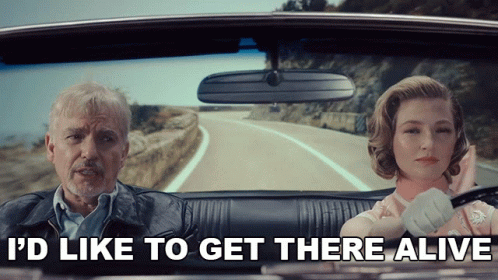
PERSONAL CONCERNS
DRIVING TIRED
There are several ways our driving can be impacted when we are tired. Our reaction time is slower, our judgment and vision are not as sharp, and we’re not as alert or attentive. We may even undergo an increase in moodiness and aggressive behavior and have problems with information processing and short-term memory. Fatigue can affect our vision as well.
Here are some symptoms of drowsiness while driving, compiled by the National Sleep Foundation:
- Impaired reaction time and judgment
- Daydreaming and wandering thought
- Decreased performance, vigilance, and motivation to continue to your destination
- Yawning or rubbing your eyes repeatedly
- Trouble focusing and keeping your eyes open or your head up
- Drifting from your lane, tailgating, driving below the speed limit, and missing signs or exits; or feeling restless, irritable, or aggressive
FEELING OVERLY EMOTIONAL
Though it is something that cannot be counted, weighed, or measured, stress is known to result from excessive demands on physical or mental energy. It can cause fatigue, unhappiness, emotional problems, and in the long run, illness.
Stress is a physical condition in which your blood pressure and heart rate increase in response to a perceived threat. It is not necessarily bad because it is a fundamental component of life that helps make living exciting and challenging. Rather, it is how you handle the stress that can make or break you.
The human body responds to stress by going through three stages: alarm, resistance, and exhaustion. When you cannot deal with stress, it may affect your health, both physically and emotionally. For example, distress (negative stress) may result in high blood pressure, migraine headaches, backaches, or insomnia.
Stress may bring out anger. Anger and stress on the road can cause chaos. Angry, stressed, fatigued, and emotionally upset drivers affect the other drivers on the road. They will usually speed, cut in and out of traffic, and do a lot of yelling. Angry drivers may also fall asleep behind the wheel, which may cause an increased potential for a collision.
Stress and anger greatly increase the danger of crashes because drivers:
- Get upset over trivialities or become nervous in unusual situations.
- Lose their tempers and, consequently, their judgment.
- Express anger by driving recklessly.
- Show impatience in traffic jams by useless horn blowing.
- Flash their high-beam lights in the eyes of approaching drivers.
- Talk loudly or use profanity.
- Resort to crowding and forcing others out of traffic lanes.
Although you cannot avoid stress completely, you can still minimize its impact. The following tips can help you manage stress:
- Plan ahead: Planning and budgeting your time will give you more flexibility, reducing stress. Don’t wait until the last minute to do things.
- Exercise: Regular exercise will help keep you healthy and reduce stress.
- Change your routine: Try commuting during off-peak hours.
- Create a calming environment: A calming environment will also help keep your emotions from getting out of control. This sometimes means isolating yourself from your day-to-day problems temporarily or simply setting aside time to relax.
- Find a friend: Talking with someone who cares and who will listen can also help sort out any problems and reduce internal stress.

INABILITY TO FOCUS ON DRIVING
A distraction is any activity that diverts your attention from the task of driving. Driving deserves your full attention. Stay focused on the driving task.
Attention and alertness are important elements to safe driving. There are some techniques we can use to combat drowsiness and fatigue if we feel tired when driving.
- Plan to stop at least every 2 hours or every 100 miles.
- Pull over and stop in a safe area; taking a 30-minute nap may help.
- Stop and get a caffeinated beverage.
- If drowsiness persists, stop driving.

Driving is an activity that requires focus and concentration. It is a task that requires a driver to share their attention between what is happening inside their vehicle, the road ahead, other drivers, and potential hazards, all at once. If you are thinking about an important meeting, talking to another passenger in the car, or sending a message with your cell phone, you are not giving all your attention to driving.
There are three types of distractions that can contribute to a driver becoming involved in a collision:
- Visual
- Manual
- Cognitive (mental)
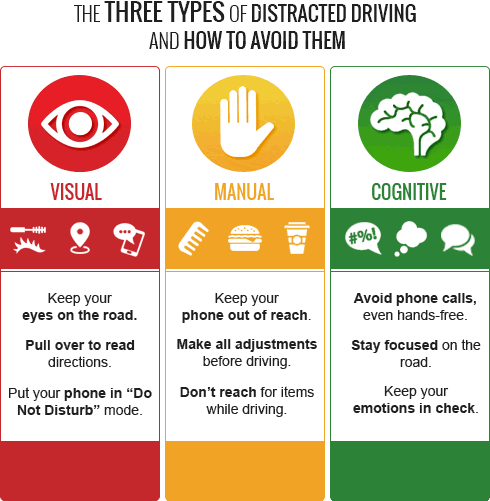
Driving is an activity that requires focus and concentration. It is a task that requires a driver to share their attention between what is happening inside their vehicle, the road ahead, other drivers, and potential hazards, all at once. If you are thinking about an important meeting, talking to another passenger in the car, or sending a message with your cell phone, you are not giving all your attention to driving.
There are three types of distractions that can contribute to a driver becoming involved in a collision:
- Visual
- Manual
- Cognitive (mental)
Examples of Visual Distractions
- Looking for items on the floor of the car
- Checking and adjusting your GPS.
- Changing the radio station.
- Adjusting your temperature controls.
- Taking in the view.
- Doing your makeup.
Examples of Manual Distractions:
A task that takes your hands off of the steering wheel while driving is an example of a manual distraction.
- Texting or looking up directions on your cell phone.
- Reaching for something that fell to the floorboard
- Restraining moving children in the car and returning them to their seat
- Eating and drinking.
- Smoking or Vaping
- Searching through your purse or wallet.
- Turning knobs in your car.
Examples of Mental Distractions:
A distraction diverts your attention from the task of driving. Driving requires your full attention. So stay focused on the driving task.
- Having a conversation with another passenger.
- Thinking about something upsetting.
- Road Rage.
- Daydreaming.
- Being over the legal limit of alcohol or having taken something that alters your mental state, makes you tired, or otherwise not ready to drive.
POOR VISION
The California Department of Motor Vehicles vision screening standard requires that the drivers have the ability to see 20/40 with both eyes together, with or without corrective lenses.
Applicants who fail the vision screening requirement are referred to a vision specialist who must examine the driver and complete a Report of Vision Examination (form DL 62). The driver must submit the completed form to the DMV before scheduling a driving test.
Limited-term licenses, temporary licenses, or extensions are not issued to drivers who have failed the vision screening until a completed DL 62 has been reviewed, and it is determined that the vision condition does not impair the person’s ability to drive safely. Individuals with extremely poor vision (visual acuity of 20/200 or worse) may not be scheduled for a driving test.
While driving, there are many strategies we can use to help compensate for the vision changes we may experience as we age. Scan your mirrors every 5 to 8 seconds, and move your eyes every 2 seconds for hazards. Also, watch for parked vehicles, cyclists, pedestrians, children, and animals, especially those in your peripheral vision. Watch for painted lane markings, bike lanes, and parking lanes which may be difficult to see in low light or rain. Choose roads that are well lit.
- Do not wear sunglasses or tinted glasses at night, dusk, or dawn unless prescribed by an eye doctor.
- For daytime glare situations, have your sunglasses ready.
- At night you should avoid looking directly into the headlights of approaching vehicles; you can avoid the glare by looking slightly to the right.
- Use extra caution when turning left and trying to judge the speed and distance of oncoming vehicles.
Vision Questions:
- Do you experience difficulty maintaining a safe speed for your driving conditions?
- Does glare present a problem when you are driving during the day or at night?
- When making a right turn at an intersection, do you sometimes strike the curb or turn over it?
- When approaching an intersection, do traffic signals or control signs appear to be blurred?
- Do you have difficulty reading the messages appearing on flashing message signs over or along the highway?
- When following another vehicle, do you have difficulty maintaining a safe following distance?
- When merging into traffic, are you sometimes surprised by another vehicle occupying that lane?
- Do you sometimes ask yourself, “Where did that car come from?”
- When making a left turn at an intersection, are you ever surprised by the speed of the oncoming vehicles as they move toward the intersection?
- Does driving in less than perfect weather conditions such as rain or fog present a problem for you?
Vision Questions Scoring
If you answered “No” to all ten questions, then your vision is in pretty good shape. If you do start to experience any of the symptoms described in the previous questions, you may be developing a vision problem that should be looked at by an eye doctor.
If you answered “Yes” to even one question; you may be experiencing a vision problem. It would be a good idea to schedule an appointment with your eye doctor to discuss your symptoms.
MEDICATION / ALCOHOL LEVEL
Many medications, both over-the-counter or prescription, can make you drowsy and seriously impair your focus. Drowsiness caused by illness or medications directly alters decision-making and the ability to safely operate a motor vehicle.
It is your responsibility to know the effects of any medications you take. You should consult your doctor or pharmacist if you are going to be taking any medications before you drive a motor vehicle. Under no circumstances, unless directed by a physician, should you mix medications.
Additionally, never mix alcohol with your medications and never take a medication that is prescribed to someone else.
Medication: Side Effects
Medications can cause side effects that negatively affect our driving ability at any age.
These side effects may gradually become more pronounced with age, and may seriously affect our driving. As we age and our bodies slow down, it takes even longer for the effects of medication to wear off after we stop taking them.
Medication: Interactions
The other major consideration with medications is the way they may interact with each other. The more medications we take, the greater the chance for interactions that may influence our driving. This applies to both prescription AND over-the-counter medications. Herbal remedies are also included and may have side effects and interact with prescription medications.
Learn more about how medications interact with alcohol, caffeine, certain foods, and other medications.
Visit the Drug Interaction Checker at the following link, https://healthtools.aarp.org/drug-interactions for more information. You might be surprised by what you find.
Once you’re done, make sure to close the tab to return to the course.
Medication Tips
- Check with your doctor or pharmacist to find out if any of the medications you are currently taking could affect your driving ability.
- Always read the information that comes with your medication for side effects that could impact your driving.
- Make sure you are free of any harmful side effects before driving; plan other ways to get around.
- For any new medication, see how you react to it before attempting to drive; each person’s reaction to any medication is unique.
- All medications (prescribed, over-the-counter, and herbal supplements) are potentially dangerous.
- Do not mix medications unless indicated by your physician.
- Never drink alcohol while on any medication without first consulting with your doctor.
- Take medication at the doses and times prescribed.
- Never take medicines past their expiration dates.
- Never take medications prescribed for another person.
- Carry a list of your medications with you.
Medical Conditions
Medical conditions can affect our sensory, motor and mental well-being, so it’s important to understand these limitations and how they can impact our driving ability. Medical conditions may affect our ability to recognize dangerous situations and react quickly enough to avoid them. They can also cause loss of control over our vehicle’s speed or direction, and forgetfulness when navigating familiar routes.
There are many medical conditions that can affect our ability to drive, so you should always consult a physician for information and advice. Let’s take a look at some medical conditions and review some driving recommendations that will help keep you safe.
Alcoholism
People who are suspected of alcoholism should be:
- Instructed not to drive.
- Referred to alcohol and drug abuse centers for treatment.
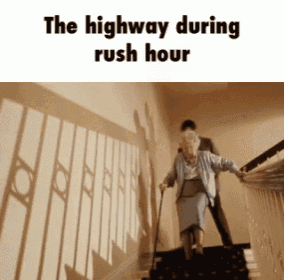
CONDITIONS ARE BEYOND DRIVING ABILITY (SELF-REGULATING DRIVER)
Knowing your limits is an important part of being a responsible driver. If conditions are beyond your comfort zone (rain, snow, fog, traffic) or skill set – it’s important to identify when to stay home or seek alternative transportation.
New drivers who have had their license for a day should not go out and attempt to drive on a congested freeway at rush hour the next day. There should be a steady progression of practice and exposure to new driving conditions in order to obtain the skills and experience needed to perform those complex tasks. If you feel uncomfortable about driving in a certain situation, such as in a city environment, then you shouldn’t. Putting yourself in a driving situation that is beyond your capabilities is only asking for trouble.
- Do not drive unless you really have to.
- If you do have to drive, pay extra attention to the driving environment.
- Drive at a reduced speed.
- Increase your following distance.
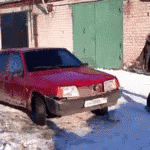
VEHICLE MEETS STATE REQUIREMENTS
All vehicles must meet requirements set forth by the vehicle code and California DMV Driver’s Handbook. It is against the law to operate a vehicle that is in an unsafe condition, is unsafely loaded or presents a hazard to the driving community.
In order to operate a motor vehicle on the road in California, that vehicle must meet certain requirements, some of which include:
- Properly operating lights, brakes, windshields, horns, and other equipment.
- Properly operating safety equipment, such as seat belts and child seats.
DRIVER LICENSE/VEHICLE REGISTRATION / LIABILITY INSURANCE IS NOT VALID OR CURRENT
In order to lawfully operate a motor vehicle on the roadway, the operator must have a valid driver’s license. If the operator’s driver’s license has been suspended, revoked or canceled, or they do not have a driver’s license, then they are not allowed to drive a vehicle. All original DL or identification (ID) card applicants must submit satisfactory proof of California residency. DMV is prohibited from issuing an original DL/ID card to a person who does not submit satisfactory proof of California residency (CVC § 12801.5).
Also, the vehicle must have valid registration and insurance coverage. If the vehicle is not registered, or the registration has been suspended, it may not be operated on the road. Additionally, it is against the law to drive without valid auto insurance on your vehicle.
Insurance Requirements
All drivers are required to be financially responsible for their vehicles on the road. This means insurance. There are four ways to obtain financial responsibility:
- Coverage by an insurance company.
- A deposit of $35,000 with the DMV.
- A surety bond for $35,000 from a company licensed in California; or
- A DMV-issued self-insurance certificate
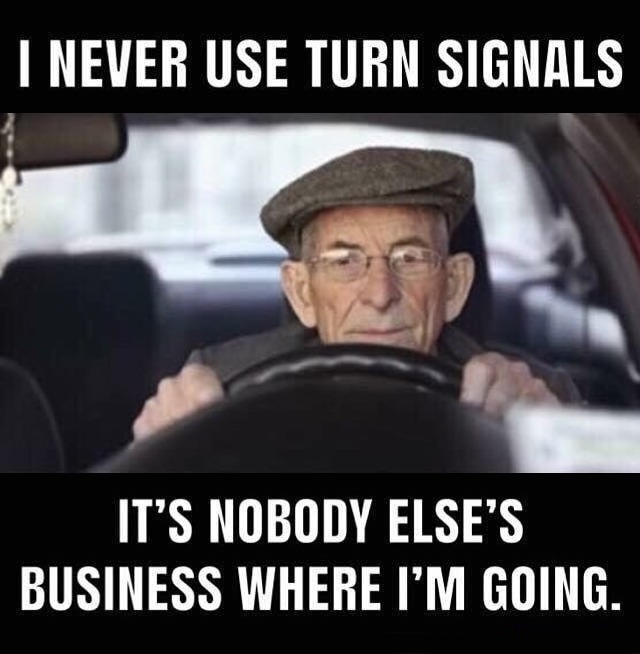
COMMUNICATION
To share the road safely with our fellow drivers, we must communicate clearly. Watch for communication from others — brake lights, turn signals, eye contact. Observe the clues other drivers give you as to their intentions. If a driver moves to the right, what does that tell you? Is that driver preparing to change lanes or turn?
All drivers have a responsibility to provide clear signals to others. For example, always signal well in advance if you are about to change lane position but keep in mind that if you signal too early — or if you signal unnecessarily — you may confuse other road users. Be aware of what your turn signal is doing. Has it been cancelled too early, before you’ve actually made the turn or lane change? Make sure you re-apply it. Did it fail to cancel after you made your turn? Cancel it as soon as you complete the maneuver.

BEING COURTEOUS
Courtesy reflects a positive attitude, one that every driver should take with them behind the wheel. Some driving conditions change constantly and are beyond our control. To be safe in all your driving, never get behind the wheel unless you are calm, rested, and sober. High emotions, fatigue, and all drugs (not just alcohol) can seriously impact your ability to react, or may cause a false perception of the reality of the situation. It is important to have a clear mind when driving. Here are some other things to keep in mind:
- Maintain the speed limit – follow at a safe distance and if others cut in front of you, keep dropping back to maintain proper distance.
- Do not fight tailgaters – get out of their way, if you can. If you can not, slowly decelerate and let them pass you.
- Be considerate when changing lanes and passing people. Use your signals – even when others do not.
- Be polite with your lights – remember that the person who is blinding you with their bright lights probably just forgot to turn them down.
- Be respectful of drivers who are slow or hesitant – age or physical ability may make driving difficult for them, be courteous!

KNOWING AND CORRECTLY APPLYING RULES OF THE ROAD
It would be a jungle out there if everyone drove at the speeds they wanted, then crashes would happen left, right, and center. Would you want to be on the road in that scenario? To ensure that people drive safely and with reasonable discipline, there are laws in place. Understanding and respecting these rules of the road are the responsibility of every driver.
The State of California has rules in place to help ensure a safe and pleasant driving experience. The primary rules to apply include:
- Right of Way
- Speed limits
Right of Way laws will be discussed in great detail in section 5(the Road). Speed is one of the simplest laws to follow – and yet it may be the most abused. Following are some basic rules regarding speed limits.
The basic speed law deems that drivers shall not drive faster than what is safe and appropriate for current conditions (taking weather, road conditions and other circumstances into consideration) on any roadway.
The speed limits where there are no signs such as in an alley are called prima facie limits. Note that these speed limits do not need to be posted to be enforced.
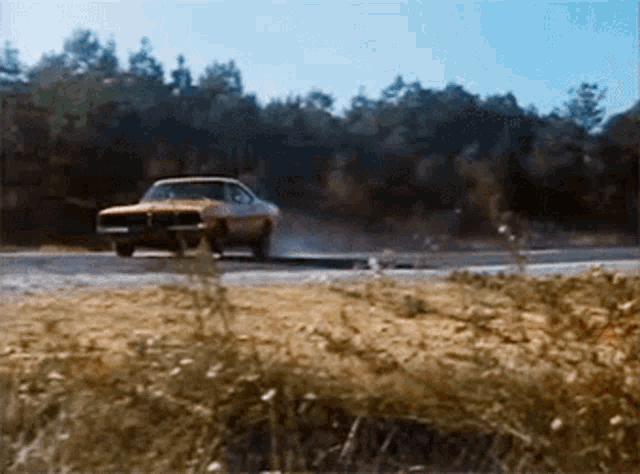
IDENTIFYING AND RESPONDING TO HAZARDS
Driving seems so simple – it’s a task we engage in daily! Millions of people drive every day – and yet there are so many things happening that can distract us. Inside the car – we have ourselves and passengers. And outside there are a plethora of happenings that can cause us to lose focus while we drive.
Hazards on the road are inevitable. Although you may do everything right to be a defensive driver, you cannot control what the drivers around you may do. Keeping this in mind, we will examine different precautions that you can take to help eliminate the dangers that could be caused by other drivers.
So what exactly is a road hazard? Simply put, it is a situation that could quickly develop into a road emergency. A road hazard doesn’t require immediate action, but if it develops into an emergency, you may be forced to take evasive and often dangerous action to avoid crunch, thud or bump.
A road emergency places you, your passengers and usually others, in serious jeopardy of injury – or worse. It’s much easier to avoid a road hazard, before it becomes a road emergency.
Road hazards can be obvious or more subtle. They can be visible or hidden from sight. We can all relate to a child playing ball on the side of the street or a giant piece of debris that has fallen from a truck. Hazards can also include accidents, weather-related conditions, other drivers, mechanical failures, and more. No matter the hazard- you’ll be ahead of the game if you remain alert in identifying hazards in advance so that you have plenty of time to react.

Examples of Hazards
- Physical roadway features (i.e. changes in road surface, hills, curves, barriers, medians and the layout of the road)
- Other vehicles (including cars, trucks and motorcycles)
- Vulnerable road users (i.e. pedestrians, animals, bicyclists)
- Traffic control devices (i.e. road signs, signals, traffic lights and pavement markings)
CHILD ENDANGERMENT
CHECKING AROUND VEHICLE PRIOR TO ENTERING AND LEAVING
It’s always best to look all the way fully around your vehicle before you get in and again before you put the car in gear. Many cars are equipped with detection devices like backup cameras or warning sounds, but they cannot take the place of you actively walking around your car to make sure children are safely out of the way. Do not rely solely on these devices to detect what’s behind your vehicle. Educate children not to play in or around cars and supervise children carefully.
Backovers and Frontovers
Many children are killed or seriously injured in backover incidents. A backover incident typically occurs when a vehicle coming out of a driveway or parking space backs over an unattended child because the driver did not see him or her.
According to the National Highway Traffic Safety Administration, every year, thousands of children are hurt or die because a driver backing up didn’t see them. These incidents, for the most part, take place in residential driveways or parking lots.
- The predominant age of victims are one-year olds. (12-23 months)
- Over 60% of backing up incidents involved a larger size vehicle (truck, van, SUV).
- Tragically, in over 70% of these incidents, a parent or close relative is behind the wheel.
Backovers are often the predictable consequence of a child following a parent into the driveway and standing behind their vehicle without their parent’s knowledge. Backovers can happen in any vehicle because all vehicles have a blind zone- the area behind a vehicle you cannot see from the driver’s seat. The danger increases with larger vehicles. It’s always best to look carefully behind the vehicle before you get in and again before you put the car in gear to back up. Remember to back up slowly and pay attention to your mirrors.
Every year, thousands of children are hurt or die because a driver moving forward very slowly didn’t see them. These incidents for the most part take place in residential driveways or parking lots and are referred to as ‘frontovers’ (the opposite of a backover). The National Highway Traffic Safety Administration January 2009 report (DOT HS 811 085) states that ‘other’ (not a backover) non-occupant non-traffic crashes are responsible for 393 deaths and 20,000 injuries per year.
Prevention Tips:
- Always walk around your vehicle and check the area around it before backing up.
- Be aware of small children-the smaller a child, the more likely it is you will not see them.
- Teach children to move away from a vehicle when a driver gets in it or if the car is started.
- Have children in the area stand to the side of the driveway or sidewalk so you can see them as you are backing out of a driveway or parking space.
- Make sure to look behind you while backing up slowly in case a child dashes behind your vehicle unexpectedly.
- Take extra care if you drive a large vehicle because they are likely to have bigger blind zones. Roll down your windows while backing out of your driveway or parking space so that you’ll be able to hear what is happening outside of your vehicle.
- Teach your children to keep their toys and bikes out of the driveway.
- Because kids can move unpredictably, you should actively check your mirrors while backing up.

LEAVING YOUNG CHILDREN IN VEHICLE UNATTENDED
Children are instinctively curious and love to explore their surroundings. If you leave your kids unattended in or near a vehicle, it won’t be long before they are playing in it. Never leave your child alone around cars.
Any of the following can happen when a child is left alone in or around a vehicle:
- Die of heat stroke because temperatures can reach deadly levels in minutes.
- Be strangled by power windows, retracting seat belts, sunroofs, or accessories.
- Knock the vehicle into gear, setting it in motion.
- Be backed over when the vehicle backs up.
- Become trapped in the trunk of the vehicle.
A child under 7 years of age is not allowed to be left in a vehicle without another person 12 years of age or older under either of the following circumstances:
- Where there are conditions that present a significant risk to the child’s health or safety.
- When the vehicle’s engine is running, and/or the vehicle’s keys are in the ignition.
Approximately 150 children die each year due to a family member leaving them in a vehicle unattended.
The most common factors involved with children being forgotten in vehicles include changes in normal routines, lack of sleep, stress, fatigue, distractions and hormone changes. Be extra careful if you are experiencing any of these factors. Forgetting a child in the back seat can happen to you, your spouse/partner, or caregiver who helps with your children. This tragedy can happen to anyone. Get in the habit of always opening the back door of your vehicle every time you reach your destination to make sure no child has been left behind. This will soon become a habit.
- TEMPERATURE OF A VEHICLE ON A HOT DAY
Children and animals too have been known to die in very short periods of time when left in an unattended vehicle. Even temperatures as low as 60 can be hot inside a vehicle. A child’s body heat rises faster than an adult’s. Don’t think that cracking a window significantly lowers the temperature enough to be safe inside a car. In just 10 minutes, a vehicle’s temperature can rise 20 degrees higher than the outside temperature. 10 more minutes results in 10 more degrees. Therefore, the vehicle can become 110 degrees in less than 20 minutes when the outside temperature is as low as 80 degrees. The dashboard can reach temperatures as hot as 200 degrees on hot days.
Prevention Tips:
- Never leave a child unattended in a vehicle.
- Do not let your children play in an unattended vehicle. Teach them that a vehicle is not a play area.
- Never leave infants or children in a parked vehicle, even if the windows are partially open.
- Make a habit of looking in the vehicle – front and back – before locking the door and walking away.
- If you are dropping your child off at childcare, and normally it’s your spouse or partner who drops them off, have your spouse or partner call you to make sure the drop went according to plan.
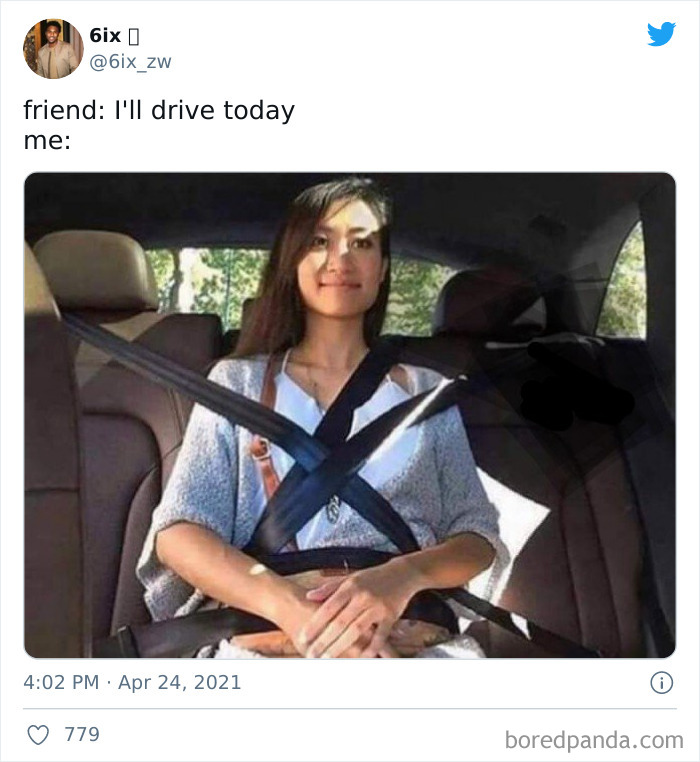
RELEASING BRAKE/SHIFTING TO NEUTRAL
If you leave the key in the ignition, automatic transmissions may be shifted “out of park” even if the vehicle’s engine is off and the driver’s foot is not on the brake. If you leave a child alone in a motor vehicle, whether the engine is running or not, it doesn’t take long for a child to unintentionally set your car in motion.
Prevention Tips:
- Keep the vehicle locked when unattended.
- Never leave keys in the car.
- Engage your emergency brake every time you park.
Power Windows
Children can hurt themselves with power windows. Many kids are injured when a window closes on their finger, wrist, or hand. Some kids have been strangled by power windows.
Seat Belt Entanglement
The majority of seat belts have a locking mechanism that is activated when the seat belt is pulled all the way out from the retractor. This feature is designed for child seat installation. In instances when the locking feature activates, the child may not be able to free him or herself.
This can happen if you do not properly restrain your child, for example, if you let the child lie down or sleep on the vehicle seat, instead of being properly restrained. Older children who are no longer in a child restraint system can become entangled by pulling a seat belt all the way out of the retractor, or by playing with an unused seat belt.
Trunk Entrapment
Children are curious and love to explore their surroundings. So, if you leave your kids unattended in or near a vehicle, it won’t be long before they are playing in it. Hide and seek can turn deadly if they get trapped in the trunk, where temperatures can rise very quickly – resulting in heatstroke or asphyxiation.
Prevention Tips:
- Teach your children not to play with window switches.
- Properly restrain your children in car seats or seat belts to prevent them from accidentally activating power windows and sunroofs. Children must be restrained in a DOT approved child seat until they are 8 years old or 4 feet 9 inches in height.
- Look and make sure your kids’ hands, feet, and head are clear of windows before raising the windows. If available, activate the power window lock switch so that your children cannot play with the windows.
- Teach children that seat belts are not toys. Be aware that some seat belts have a retractor that locks if pulled all the way out.
- Buckle unused seat belts. Pull the seat belt out all the way to the end without yanking. Then, feed the excess webbing back into the retractor.
- Teach children that vehicle trunks are for cargo, not for playing. If you cannot fit cargo, which may be heavy, in the trunk and have to transport it inside the vehicle, be sure it is secure and not near children as it could fall on them.
- Check the trunk right away if your child is missing.
- Lock your car doors and trunk and be sure keys and remote entry devices are out of sight and reach of your kids.
- Keep the rear fold-down seats closed/locked to keep your children from climbing into the trunk from inside your car.
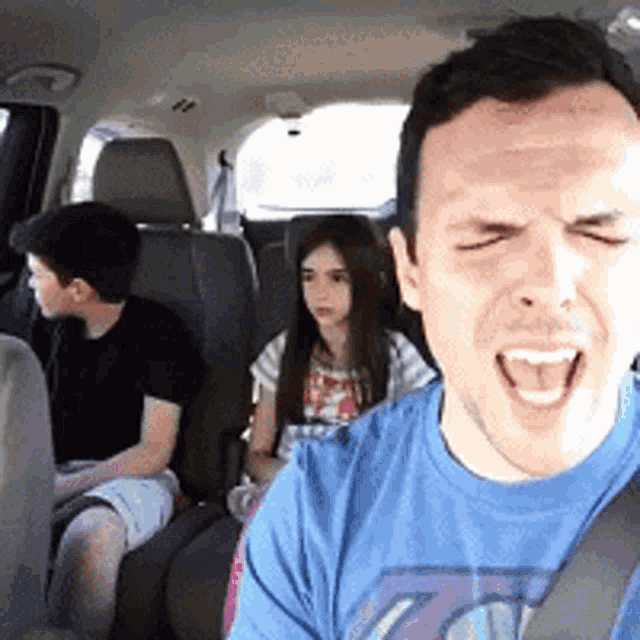
PROPERLY SECURING CHILDREN IN VEHICLE AS WELL AS HEAVY ITEMS
Current child passenger safety seat laws require children to ride in either a car seat or booster seat until the age of eight or until they reach a height of 4 feet 9 inches.
A child who is under eight years of age, but who is 4’9″ in height or taller, may be properly restrained by a seat-belt rather than a child passenger restraint system. This law also requires children who do not meet the age or height requirement to ride in the rear seat of a vehicle unless the vehicle has no back seats, the back seats are rear-facing or side-facing jump seats, the restraint system cannot be properly installed, the rear seats are already occupied by children under age eight, or medical reasons necessitate that the child not ride in the rear.
In addition to all existing child passenger restraint laws, all children under the age of 2 must be secured in a rear-facing child safety seat in the rear of the vehicle unless the child is 40 inches or taller, or weighs 40 pounds or more. The child shall be secured in a way that complies with the specifications of the child passenger restraint system manufacturer. CVC 27360 & CVC 27363.
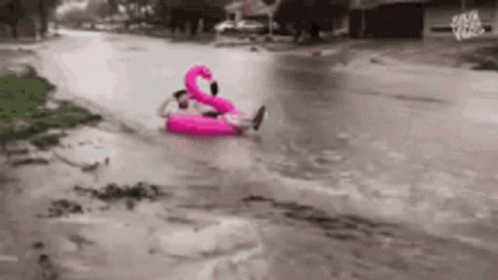
POOR DRIVING CONDITIONS (SUCH AS DOWNPOUR, SLIPPERY ROADS, ETC)
Rain
When rain first starts falling, the water mixes with dust, dirt, sand and oil on the road surface, creating an extremely slippery substance. The first 20 minutes of a rain shower is the most dangerous time to be driving. When traction is poor, accelerate gradually. Steer with smooth, precise movements. On wet roads reduce your speed by 5-10 mph.
Allow plenty of travel time for driving in wet weather, and be alert for common driver mistakes caused by weather.
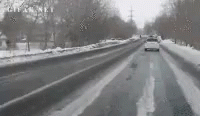
Snow and Ice
Some of the most dangerous conditions occur when temperatures are hovering around freezing, when snow begins to turn to watery slush. The combination of snow and water can be extremely slippery. If you are forced to drive in windy conditions and it is snowing, be cautious of snow drifts which make it difficult to pass and see. If the snow is melting just before the sun goes down, it is likely the temperature will drop at night, turning melted snow into ice.
Adjust your speed in icy conditions:
- If you encounter packed snow, reduce your speed by half.
- If you are traveling on ice, reduce your speed to 10-15 mph.

Fog
You should consider postponing your trip until the fog clears. If you must drive, then slow down and turn on your low beam headlights because the light from the high beam will reflect back and cause glare. You can increase visibility in dense fog by using your low beam headlights.
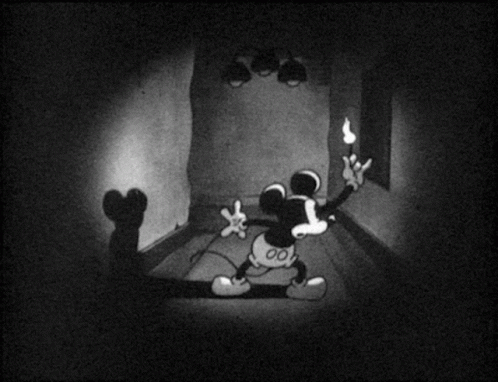
Darkness
Be very careful when you drive at night. Go slower because you cannot see far. You will have less time to stop if a hazard lies ahead. Make sure you can stop within the distance lighted by your headlights. The law states you must turn your headlights on 30 minutes after sunset and leave them on until 30 minutes before sunrise. You must turn your lights on any time you can’t see at least 1000 feet ahead of you. Use your low beam headlights whenever it is raining. Remember that it is always illegal to drive with only your parking lights on.
Use your low beams in fog, snow or heavy rain. Light from high beams will reflect back and cause glare. Do not blind other drivers with your high beam headlights. Slow down at the first sign of rain, drizzle or snow. This is when many road pavements are most slippery because oil and dust have not been washed away. Driving through puddles can lead to reduced braking ability.
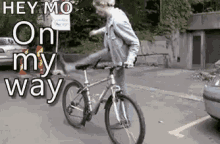
RIGHTS AND DUTIES
Pedestrians, bicycles, and motorcycles
A pedestrian is someone on foot or who uses a means of travel such as roller skates, skateboard or wheelchair. We have previously discussed the rights of pedestrians briefly in this course. In this lesson, we will further examine the role of pedestrians as it relates to motor vehicle drivers. More specifically, we will look at the rules that pedestrians must obey.
Pedestrian related to traffic laws/traffic safety
A pedestrian is a person on foot or using a conveyance propelled by human power (roller-skates, skateboards, etc.) other than a bicycle. The definition of pedestrian includes persons who are disabled and use self-propelled wheelchairs, tricycles, or quadricycles because they are not able to move about as a pedestrian. These individuals must be given the same rights as any other pedestrian.
Pedestrians have a duty of using due care for his or her safety. No pedestrian may suddenly leave a curb or other place of safety and walk or run into the path of a vehicle that is so close as to constitute an immediate hazard. No pedestrian may unnecessarily stop or delay traffic while in a marked or unmarked crosswalk.
Pedestrians have responsibilities to contribute to the mutual safety of cars and people as well. These suggestions include:
- Scan left, right, and left before crossing
- Make eye contact with motorists
- Cross only at controlled intersections when available (and always avoid running out into heavy traffic)
- Wear light colored clothing
- Cross in well-lit areas at night
- Walk only when the “WALK” sign is lit. If you have started across the street when the “DON’T WALK” sign appears, finish crossing as quickly as possible. Waiting on a raised median might also be a good option. A flashing “DON’T WALK” or “WAIT” or approved “Upraised Hand” symbol with a “countdown” signal indicating the time remaining for a pedestrian to cross the roadway means a pedestrian facing the signal may start to cross the roadway in the direction of the signal but must complete the crossing prior to the display of the steady “DON’T WALK” or “WAIT” or approved “Upraised Hand” symbol when the “countdown” ends.
- A steady “DON’T WALK” or “WAIT” or approved “Upraised Hand” symbol or a flashing “DON’T WALK” or “WAIT” or approved “Upraised Hand” without a “countdown” signal indicating the time remaining for a pedestrian to cross the roadway means a pedestrian facing the signal shall not start to cross the roadway in the direction of the signal, but any pedestrian who started the crossing during the display of the “WALK” or approved “Walking Person” symbol and who has partially completed crossing shall proceed to a sidewalk or safety zone or otherwise leave the roadway while the steady “WAIT” or “DON’T WALK” or approved “Upraised Hand” symbol is showing.
Stand clear of buses, hedges, parked cars and other obstacles before crossing so drivers can see you
Crossing Between Controlled Intersections
CVC 21955. Between adjacent intersections controlled by traffic control signal devices or by police officers, pedestrians shall not cross the roadway at any place except in a crosswalk.
Pedestrians must not suddenly leave a curb or other safe places and walk or run into the path of a vehicle that is close enough to be a danger to you. This is true even though you are in a crosswalk. The law says that any driver must take care for the safety of any pedestrian but if the driver can’t stop in time, the law won’t help.
California Vehicle Code 21956 states that when outside of a business or residence district, pedestrians must walk on the left side of the road. This puts the pedestrian closest to traffic coming from the opposite direction, which allows the pedestrian and driver to better see each other. The exception to this is if a crosswalk or other means of safely crossing the roadway to get to the left side is not available or if existing traffic or other conditions would compromise the safety of a pedestrian attempting to cross the road.


